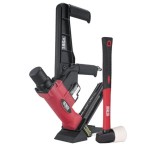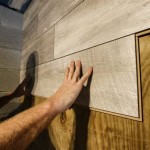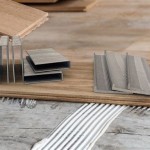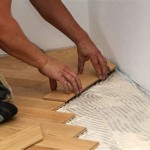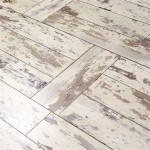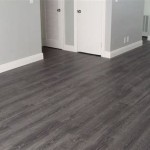Red Birch Flooring Reviews: A Comprehensive Overview
Red birch flooring, derived from the red birch tree (Betula nigra), offers a distinctive aesthetic and several practical advantages for homeowners and builders alike. Its warm tones and unique grain patterns have made it a popular choice for those seeking a balance between classic elegance and contemporary design. This article provides a comprehensive review of red birch flooring, encompassing its characteristics, advantages, disadvantages, cost considerations, installation tips, and maintenance requirements, aiming to equip readers with the knowledge necessary to make informed decisions regarding its suitability for their projects.
Aesthetic and Physical Characteristics
The defining characteristic of red birch flooring is, naturally, its color. While the name implies a predominantly red hue, the color spectrum within a red birch floor can range from light sapwood, which is a creamy white or yellow, to the heartwood, displaying a rich reddish-brown. This variation contributes to a visually dynamic and interesting floor surface. The grain pattern of red birch is typically straight and closed, but can occasionally exhibit subtle swirls or figure, adding to its character.
Beyond its aesthetic appeal, red birch possesses notable physical properties. It is considered a moderately hard wood, ranking around 1260 on the Janka hardness scale. This rating places it between cherry and hard maple, suggesting a decent resistance to dents and scratches under normal household use. However, it's important to note that red birch is softer than some other popular hardwood options like oak or hickory, making it potentially more susceptible to damage in high-traffic areas or homes with large pets.
Red birch flooring is available in various cuts, including plain sawn, rift sawn, and quarter sawn. Each cut reveals a different grain pattern, influencing the overall appearance of the floor. Plain sawn red birch is the most common and economical option, showcasing a cathedral-like grain pattern. Rift sawn red birch produces a linear grain with minimal figuring, offering a cleaner, more uniform look. Quarter sawn red birch displays a very straight, vertical grain, prized for its stability and resistance to cupping and warping. The choice of cut depends on the desired aesthetic and budget.
Furthermore, red birch flooring comes in both solid and engineered formats. Solid red birch flooring consists of planks made from a single piece of wood, typically ¾ inch thick. It can be sanded and refinished multiple times, extending its lifespan. Engineered red birch flooring, on the other hand, is composed of multiple layers of wood veneer bonded together, with a top layer of red birch. Engineered flooring offers greater stability, especially in environments with fluctuating humidity levels, and can often be installed over concrete slabs.
Advantages of Red Birch Flooring
One of the primary advantages of red birch flooring is its aesthetic versatility. The warm, reddish-brown tones complement a wide range of interior design styles, from traditional to contemporary. It pairs well with both light and dark furniture, and its natural variations in color create a visually interesting and inviting atmosphere. The ability to choose between different cuts and finishes further enhances its adaptability to various design preferences.
Compared to some exotic hardwoods, red birch is generally considered a more sustainable choice. Red birch trees are relatively fast-growing and are often sourced from well-managed forests. This makes it a more environmentally responsible option for homeowners concerned about the sustainability of their flooring materials. Selecting red birch flooring certified by organizations like the Forest Stewardship Council (FSC) provides assurance that the wood comes from responsibly managed forests.
Red birch flooring can contribute to the overall value of a home. Its attractive appearance and durable nature make it a desirable feature for potential buyers. While it may not be as prestigious as some higher-end hardwood options, it offers a significant upgrade over carpet or laminate flooring. Proper installation and maintenance are crucial to maximizing its value and longevity.
The affordability of red birch, relative to other hardwoods like maple or walnut, also stands as an advantage. It provides a beautiful hardwood floor without the premium price tag associated with specialty species. This makes it an attractive option for homeowners working within a specific budget who still desire the look and feel of authentic hardwood.
A properly installed and finished red birch floor enhances a room's acoustic qualities. Hardwood flooring does not trap allergens, dust mites, or other contaminants the way carpet does, making it a healthier choice for individuals with allergies or respiratory sensitivities. Regular cleaning and maintenance further contribute to a healthier indoor environment.
Disadvantages and Considerations
Despite its many advantages, red birch flooring also has some potential drawbacks to consider. Its moderate hardness, as mentioned earlier, makes it susceptible to dents and scratches, particularly in high-traffic areas or homes with pets. While regular maintenance can mitigate this issue, homeowners should be prepared to address potential damage over time. Using appropriate flooring protectors under furniture legs and implementing a strict no-shoes policy can help preserve the floor's appearance.
Red birch is also somewhat sensitive to moisture. Excessive humidity or exposure to water can cause the wood to swell, warp, or cup. It is not recommended for use in bathrooms, laundry rooms, or other areas prone to high moisture levels, unless specifically engineered for such applications. A consistent indoor humidity level should be maintained to prevent damage. Using a dehumidifier or humidifier can help regulate humidity levels, particularly in climates with extreme seasonal changes.
The color variations inherent in red birch flooring can be perceived as a disadvantage by some. While many appreciate the natural character and warmth of the color variations, others may prefer a more uniform and consistent appearance. Careful selection of planks during installation can help to minimize color contrasts and achieve the desired aesthetic. Consulting with a professional flooring installer can be beneficial in this regard.
Red birch can be more challenging to stain evenly compared to some other hardwoods, primarily due to its closed grain. This can result in blotchiness or uneven color absorption. Proper surface preparation and the use of a wood conditioner prior to staining can help to minimize this issue. Professional finishing services are recommended to ensure a consistent and durable finish.
Sunlight exposure can cause red birch flooring to fade or change color over time. This is a natural process for all wood floors, but it can be more noticeable in red birch due to its reddish-brown tones. Using window treatments such as curtains, blinds, or UV-resistant films can help to minimize sun exposure and preserve the floor's original color. Regularly rotating area rugs can also prevent uneven fading.
Installation and Maintenance
Proper installation is crucial to the longevity and performance of red birch flooring. Whether choosing solid or engineered flooring, it is recommended to hire a professional installer with experience working with hardwood. Professional installers possess the necessary tools, expertise, and knowledge to ensure a proper subfloor preparation, accurate measurements, and secure installation. Subfloor preparation is critical for ensuring a stable and level surface for the flooring. Any imperfections in the subfloor can lead to unevenness, squeaking, or other problems over time.
Acclimation is a vital step in the installation process. Before installation, the red birch flooring must be allowed to acclimate to the humidity levels of the room in which it will be installed. This typically involves storing the flooring in the room for several days or even weeks, allowing it to expand or contract to its equilibrium moisture content. Failure to acclimate the flooring properly can result in gapping, cupping, or warping after installation. The manufacturer's recommendations regarding acclimation should be strictly followed.
The choice of adhesive or fastening method depends on the type of flooring and the subfloor material. Solid red birch flooring is typically nailed or stapled to a wooden subfloor. Engineered red birch flooring can be glued down, floated over a subfloor, or installed using a click-lock system. The manufacturer's instructions should be carefully followed to ensure a proper and secure installation.
Maintaining red birch flooring is relatively straightforward. Regular sweeping or vacuuming is essential to remove dirt, dust, and debris. Avoid using vacuums with beater bars, as they can scratch the floor's surface. Damp mopping with a pH-neutral wood floor cleaner is recommended for removing spills and stains. Avoid using excessive water, as it can damage the wood. Dry the floor thoroughly after mopping.
Periodically, the floor may require refinishing to restore its original luster and remove surface scratches. Solid red birch flooring can be sanded and refinished multiple times, extending its lifespan. Engineered red birch flooring can typically be refinished only once or twice, depending on the thickness of the veneer layer. Professional refinishing services are recommended to ensure a smooth, even, and durable finish.
Applying a protective finish, such as polyurethane or varnish, can help to protect the floor from wear and tear. The choice of finish depends on the desired level of gloss and the anticipated traffic level. High-gloss finishes are more durable but may show scratches more easily. Matte finishes are less durable but offer a more natural and subtle look.

Lauzon Special Red Birch Solid 3 1 4 In By Wood Floors

Birch Vs Oak Wood Floors Which Is The Better Option Carlisle Wide Plank

Ultimate Guide To Birch Hardwood Flooring Know The Uses Advantages

Lauzon Special Red Birch Solid 3 1 4 In By Wood Floors

Birch Hardwood Floors Canadian Home Style

Ultimate Guide To Birch Hardwood Flooring Know The Uses Advantages

Do I Have Maple Or Birch Floors

Homelegend Dark Brown Birch 3 8 In T X 5 W Engineered Hardwood Flooring 19 7 Sqft Case Hl189h The Home Depot

What Is Red Birch Wood Definition Of

Wide Plank Birch Flooring Hardwood Vermont
Related Posts

